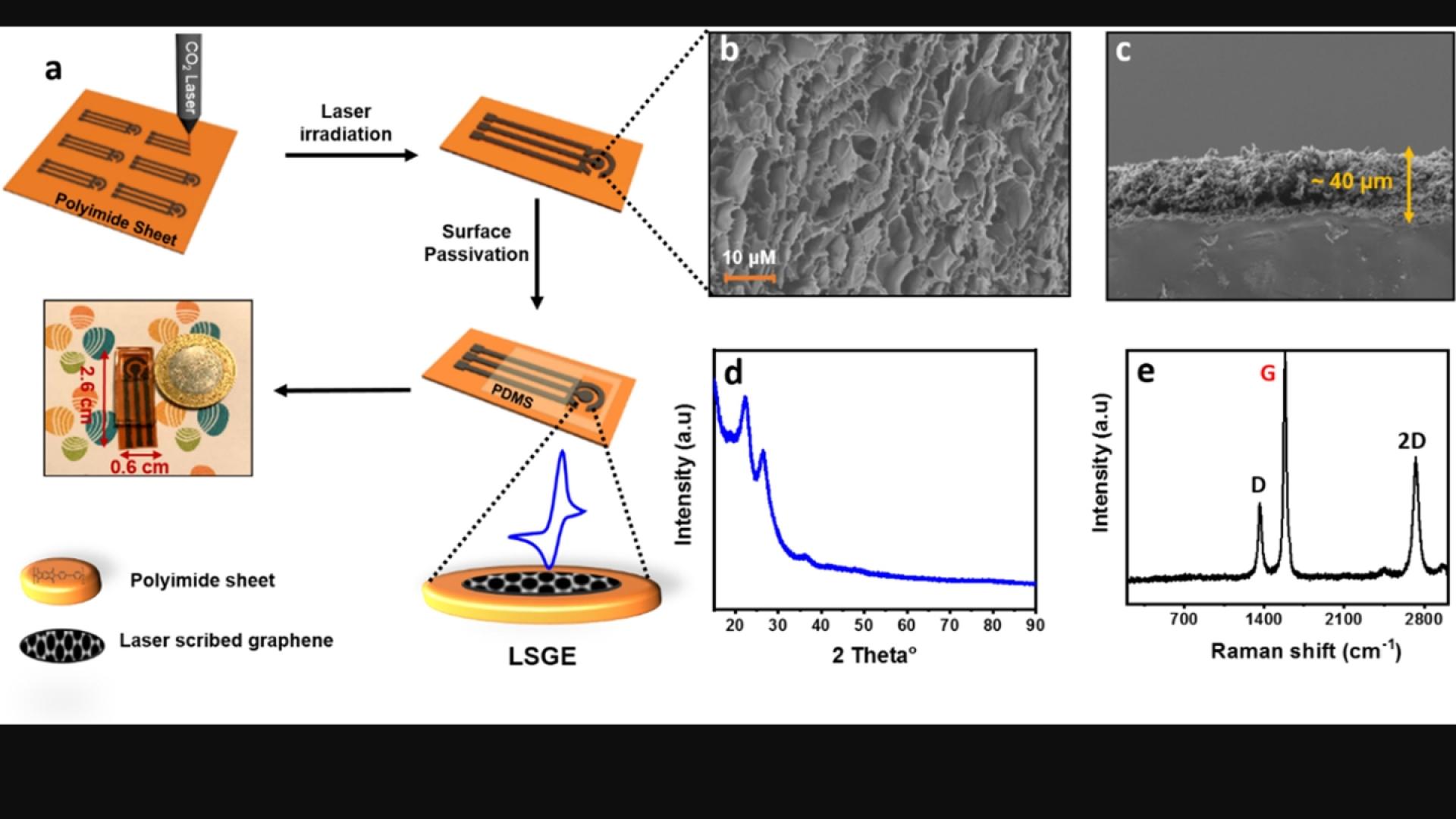Abdelghani Ghanam, et al., "Laser scribed graphene: A novel platform for highly sensitive detection of eletroactive biomolecules" Biosensors and Bioelectronics, 2020, 112509.
Laser-scribed graphene electrodes (LSGEs) have recently shown a potential for the development of electrochemical biosensors thanks to their electronic properties, porous structures, and large surface area that can support the charge transfer. In this paper, the authors present a comparative study of the electrochemical performances of LSGEs with the conventional screen-printed carbon electrodes (SPCEs) toward the detection of most commonly used phenolic compounds and biomolecules. Cyclic voltammetry measurements showed a significant enhancement in the electron transfer rate of all tested electroactive species at LSGEs compared to conventional SPCE. We have suggested, for the first time, a mechanistic study for catecholamine redox reactions at LSGE as the electron transfer–chemical reaction–electron transfer mechanism. Moreover, the excellent performances of LSGE were observed in terms of the electrocatalytic detection of paracetamol (PCM). Therefore, the second part of this study compared the analytical performances of LSGE and SPCE with respect to the detection of PCM. The LSGE allows a fast and reversible system for PCM with a low ΔEp of 88 mV while the SPCE exhibits a quasi-reversible system with a higher ΔEp of 384 mV. The LSGE demonstrated a PCM linear range of concentration between 0.1 μM and 10 μM, with a detection limit of 31 nM. In addition, the LSGE showed a successful applicability with good selectivity and sensitivity for PCM determination in real samples of pharmaceutical tablets. Hence, LSGEs could be an excellent platform for simple and low-cost electrochemical biosensor applications</p>
